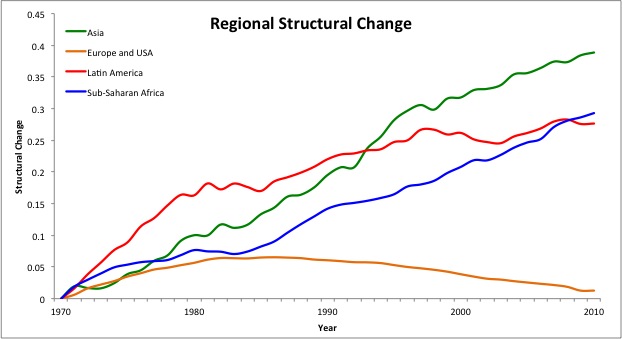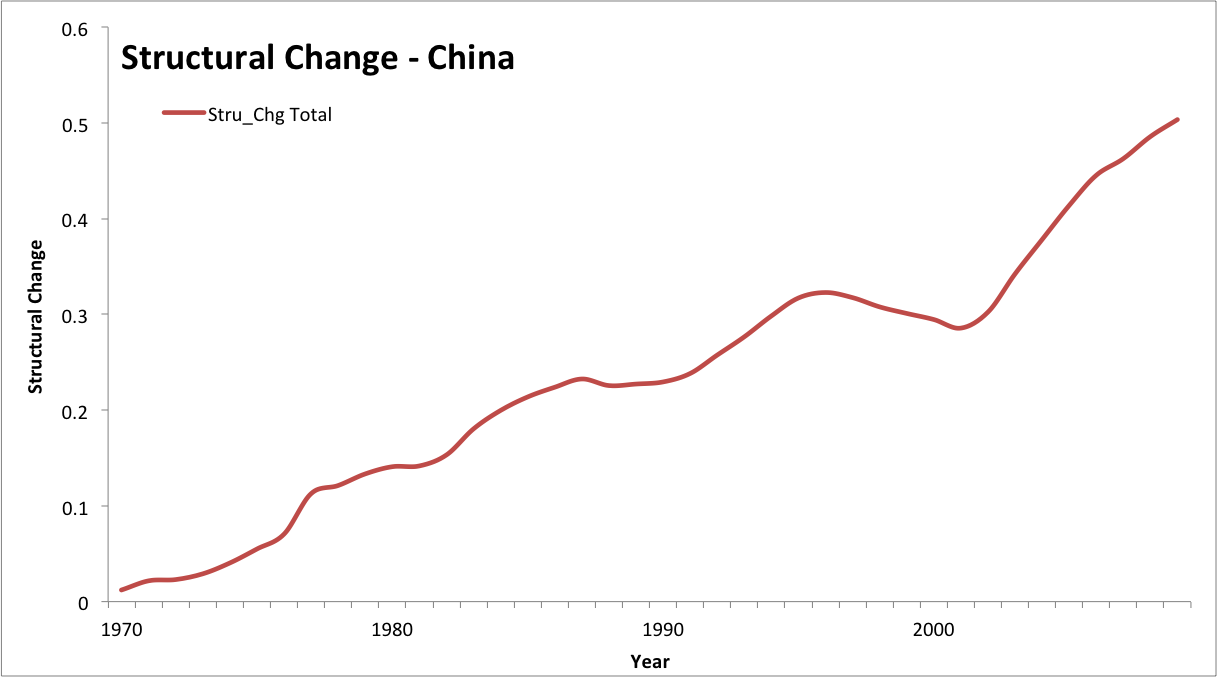Professor Islamaj and I worked on a project titled Jump Starting Structural Change. I had not done a great deal of work in the area of structural change previously so I saw this as an opportunity to both expand my understanding in an area of economics as well as the research process in general.
Structural change is about countries adapting to their changing economic environment to maximize labor productivity. As industries become more or less productive over time, or as a result of policies, labor flows between them. Whether this labor moves to more or less productive sectors can have a large impact on the economy as a whole. Most people think of this as the transition from Agriculture to Manufacturing and finally Services. I started my research with a study of “Globalization, Structural Change, and Productivity Growth, with an Update on Africa” by Margaret McMillan, Dani Rodrik, and Íñigo Verduzco-Gallo, and developing my research further using similar papers.
Over the course of the summer I spent a great deal of my time coding in Stata, and working through different methods of both representing and analyzing the data gathered. With a great deal of work being done on whiteboards in addition to computers, we now have a solid foundation of information to build off of, and what we feel are clear representations of results.
This summer proved to be a strong test of my understanding of both Econometrics and Macroeconomics. Through a study of others methodologies, and experimenting with some methods of my own, I am confident in the material I worked with and am eager to expand on the research I have done.
Below are examples of some of the results with brief explanations:
 This Graph shows the growth of structural change from year to year of four geographic regions, each composed of a diverse range of economies. We can see that Asia experienced a strong growth in positive structural change starting in the 90s while Europe and the USA experience negative structural change throughout the 80s, 90s, and 00s diminishing the positive change experienced in the 70s. This is only one representation of our results on a regional level.
This Graph shows the growth of structural change from year to year of four geographic regions, each composed of a diverse range of economies. We can see that Asia experienced a strong growth in positive structural change starting in the 90s while Europe and the USA experience negative structural change throughout the 80s, 90s, and 00s diminishing the positive change experienced in the 70s. This is only one representation of our results on a regional level.
We can see that china has seen consistent positive structural change throughout our sample with the largest dip occurring in the late 90s. This is attributed to the dip in chinas agricultural productivity while the share of labor remained the same.
Compare this to France’s experience
 We can see that from the late 80s to the early 90s the economy doesn’t experience any significant structural change but begins to fall from in the mid 90s. This can be attributed to a stagnancy in agriculture while both manufacturing and financial services declined.
We can see that from the late 80s to the early 90s the economy doesn’t experience any significant structural change but begins to fall from in the mid 90s. This can be attributed to a stagnancy in agriculture while both manufacturing and financial services declined.

